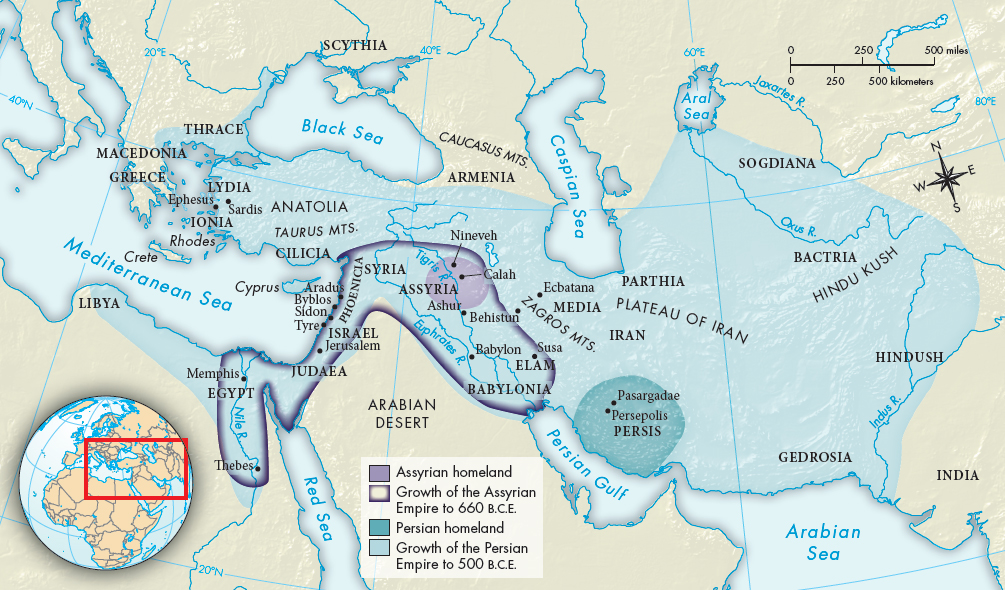Assyria’s Long Road to Power
The Assyrians had inhabited northern Mesopotamia since the third millennium B.C.E., forming a kingdom that grew and shrank in size and power over the centuries. During the time of Sargon of Akkad, they were part of the Akkadian empire, then independent, then part of the Babylonian empire under Hammurabi, then independent again (see Chapter 1). Warfare with the Babylonians and other Near Eastern states continued off and on, and in the thirteenth century B.C.E., the Assyrians slowly began to create a larger state.
The eleventh century B.C.E.— the time of the Bronze Age Collapse — was a period of instability and retrenchment in the Near East. The Assyrians did not engage in any new wars of conquest but remained fairly secure within their borders. Under the leadership of King Adad-
Eighth-

CONNECTIONS: Compare this map to Map 1.1. What changes and continuities do you see in the centers of power in the ancient Near East?
Assyrian methods were certainly harsh, but in practical terms Assyria’s success was actually due primarily to the size of its army and the army’s sophisticated and effective military organization. By Sargon’s time, the Assyrians had invented the mightiest military machine the ancient Near East had ever seen, with perhaps seventy thousand men in the field in an era that typically saw armies of under ten thousand.
Assyrian military genius was remarkable for the development of a wide variety of siege machinery and techniques, including excavation to undermine city walls and battering rams to knock down walls and gates. Never before in the Near East had anyone applied such technical knowledge to warfare. The Assyrians even invented the concept of a corps of engineers, who bridged rivers with pontoons or provided soldiers with inflatable skins for swimming. And the Assyrians knew how to coordinate their efforts, both in open battle and in siege warfare.